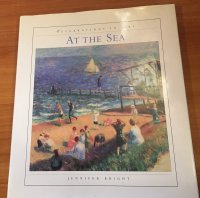 Sixteen years after Hawaiian Hellground, Bolan returns to Hawaii to rescue comrade and comedian Tommy Anders from a Chinese triad that’s holding him hostage because he’s building up a network of Chinese and Japanese business people who are tired of paying of their countrymen.
Sixteen years after Hawaiian Hellground, Bolan returns to Hawaii to rescue comrade and comedian Tommy Anders from a Chinese triad that’s holding him hostage because he’s building up a network of Chinese and Japanese business people who are tired of paying of their countrymen.
So Bolan gets involved to help the businessmen disrupt the Triads and Yakuza who are co-existing on the islands, with a precarious truce as long as the organized crime people stick to their ethnic constituencies. As part of his plan, Bolan nudges them toward a full scale war as long as he can protect the innocent.
So I can see the plot as outlined, and it could have been handled better. Some of these later books must have had more elaborate plots, perhaps more in line with the Super Bolan titles, as the page count increases, but some of the authors don’t execute them as well. In this book, it looks like the author was used to the old 180 page limit. The action moves from set piece to set piece fairly well, but you can kind of see where some plot points are left unaddressed or just mentioned in passing.
The book contains a couple of tactical problems. Of course, everyone has a different kind of gun, again, which means no one can swap ammo if needed. And he carries two spare magazines for a combat assault. Cmon, man. Kim du Toit takes two spare magazines to the bathroom. Also, Bolan takes “cover” behind a couch. It’s a heavy couch, the text says, but, this is the 21st century–we all know the difference between concealment and cover, ainna? I wonder if kids these days steeped in first person shooters could write more intelligently about military tactics and concepts. But probably not the “everyone has a different gun” thing.
Ah, well. It’s not Shakepeare. It was a quick, enjoyable read. Not as good as Firebase Florida, but not bad enough to put me off the novels for a while. I kind of think I’m on a tear here; I am down to 18 titles in the Executioner series. With “dilligence,” I could finish them by the end of next year. However, I would still have dozens of related paperbacks to go, not to mention thousands of other better things to read. So I won’t predict or promise that I’ll finish them out any time soon, gentle reader–you still have several years of intermittent Executioner book reports to look forward to.



 This audio course, I wish to remind you, gentle reader, cost me a mere fifty cents at the recent
This audio course, I wish to remind you, gentle reader, cost me a mere fifty cents at the recent  In keeping with the tradition, I am tearing through the travel and art books I’ve bought this summer and autumn on Sunday afternoons, Monday evenings, and occasionally Thursday evenings as I “watch” football games (which is more and more meaning I look up from my book to check the score from time to time). The weather has again turned to autumn at Nogglestead, and I like nothing better than lighting a fire (okay, a
In keeping with the tradition, I am tearing through the travel and art books I’ve bought this summer and autumn on Sunday afternoons, Monday evenings, and occasionally Thursday evenings as I “watch” football games (which is more and more meaning I look up from my book to check the score from time to time). The weather has again turned to autumn at Nogglestead, and I like nothing better than lighting a fire (okay, a  I said when I reported on
I said when I reported on  You know, gentle reader, for the last couple of weeks, most of my reading has been poetry, art monographs, travel books, and Christian self-help kinds of books (we’ll get to those by and by). Given the sheer number of those books that I’ve polished off in the last couple of weeks, it seems like a long time since I read any fiction (it’s not–I read
You know, gentle reader, for the last couple of weeks, most of my reading has been poetry, art monographs, travel books, and Christian self-help kinds of books (we’ll get to those by and by). Given the sheer number of those books that I’ve polished off in the last couple of weeks, it seems like a long time since I read any fiction (it’s not–I read  This book describes the Montserrat monestary just ourside of Barcelona, Spain. The monestary complex sits upon a mountain that has a rather distinctive shape with multiple rock features with individual names; the first part of the book describes its formation and how the natives named pretty much every rock on it over the millennia.
This book describes the Montserrat monestary just ourside of Barcelona, Spain. The monestary complex sits upon a mountain that has a rather distinctive shape with multiple rock features with individual names; the first part of the book describes its formation and how the natives named pretty much every rock on it over the millennia.  Instead of a single artist’s monograph, this book collects a number of paintings of the sea from Pieter Brueghel the Elder’s “Fall of Icarus” to modernist twaddle like Jackson Pollock’s “Blue (Moby Dick)”. So you can take one subject like this and kind of chart the evolution of painting through the depiction of sea-side scenes.
Instead of a single artist’s monograph, this book collects a number of paintings of the sea from Pieter Brueghel the Elder’s “Fall of Icarus” to modernist twaddle like Jackson Pollock’s “Blue (Moby Dick)”. So you can take one subject like this and kind of chart the evolution of painting through the depiction of sea-side scenes. Well, this is a relatively recent travel book. Most of the time, I find these old travel books are from the 1960s or the 1980s, but someone who went to France in this century brought this back, and this person or the heirs sold it to Calvin’s Books for me to pick up
Well, this is a relatively recent travel book. Most of the time, I find these old travel books are from the 1960s or the 1980s, but someone who went to France in this century brought this back, and this person or the heirs sold it to Calvin’s Books for me to pick up  You know, I wanted to really dislike Frida Kahlo’s work because she’s so celebrated by modern tastemakers because she was a foreign Communist bisexual back in the day. Because that’s what titillates a lot of people who want to be seen as right-thinking more than their response to the art itself, their response to the artist as celebrity. Which Frido Kahlo was and might well still be. I mean, I’ve seen ads for merchandise with her on them even in this twenty-first century.
You know, I wanted to really dislike Frida Kahlo’s work because she’s so celebrated by modern tastemakers because she was a foreign Communist bisexual back in the day. Because that’s what titillates a lot of people who want to be seen as right-thinking more than their response to the art itself, their response to the artist as celebrity. Which Frido Kahlo was and might well still be. I mean, I’ve seen ads for merchandise with her on them even in this twenty-first century.


 Have you heard the name Modigliani? I had not. He lived a brief consumptive life around the turn of the century in France, and his art work is somewhere between the Impressionism or whatever Gauguin did and Picasso; the images are representative but distorted in proportion and brutal in execution. He was only starting to get some recognition when he passed away from tuberculosis, so he’s really only known amongst art people, and perhaps fewer of them as we go along.
Have you heard the name Modigliani? I had not. He lived a brief consumptive life around the turn of the century in France, and his art work is somewhere between the Impressionism or whatever Gauguin did and Picasso; the images are representative but distorted in proportion and brutal in execution. He was only starting to get some recognition when he passed away from tuberculosis, so he’s really only known amongst art people, and perhaps fewer of them as we go along.